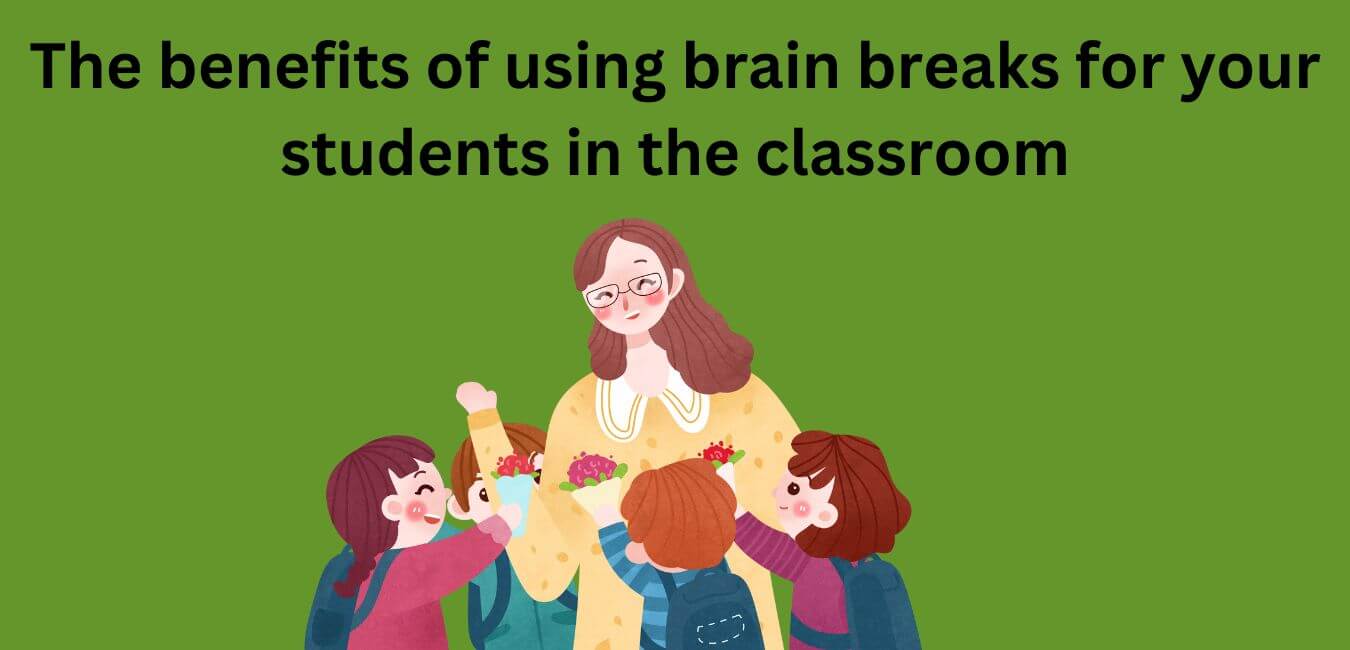In today’s educational world, a variety of teaching methods and strategies are being used. Some teaching methods are more effective than others, and some work better with certain students. It is important to find the right teaching method for the individual student in order to maximize their learning experience. There are a number of different teaching methods that can be used, and it is important to select the one that will best suit the student’s needs.
One difference between teaching methods and teaching strategies is that teaching methods are typically more general, while teaching strategies are more specific. For example, a teaching method might be lecturing, while a teaching strategy might be using visual aids to help students better understand the lecture. Another difference is that, teaching methods are usually used intentionally, while teaching strategies can often happen unintentionally. For example, if a teacher uses a textbook to help students learn a topic, that would be considered a teaching method.
In this article, we are going to look at the differences between teaching methods and teaching strategies. We will further explore why they are important for teachers.
What are teaching methods?
Teaching methods are the various strategies and techniques a teacher uses to impart information and instruction to their students. Teaching methods can be broken down into four components: content, context, delivery, and assessment. Each of these components plays an important role in how effectively a teacher communicates with their students. The content of a lesson should be relevant to the specific subject matter being taught, while the delivery of that lesson should be engaging and easy for the students to understand.
The context in which a lesson is delivered is also important; it should fit within the overall curriculum and be appropriate for the age group of students being taught. Finally, assessment is an essential part of any teaching method; it allows teachers to measure whether their students have learned what they were supposed to learn and whether they are improving as they progress through their education.
Teaching methods are the various strategies and techniques used to impart knowledge and skills to students. Teaching methods can be broadly classified into two categories: oral and non-oral. Oral teaching methods involve presenting information or instruction through verbal communication. Non-oral teaching methods involve delivering information or instruction through other means, such as demonstrations, drawings, charts, etc.
Oral teaching methods are generally more effective than non-oral teaching methods because they allow for a more interactive learning environment. This is because students can ask questions and engage in discussion while receiving information. Furthermore, oral teaching methods are easier to remember, since students retain more information when it is presented orally.
Despite their advantages, oral teaching methods have several limitations. First, they are not always feasible or desirable in some situations. For example, if a student has difficulty with articulation, it may be difficult to communicate verbally. Second, oral teaching methods can result in inconsistent learning outcomes and ineffective teaching. Students may not have the same level of understanding or mastery of the subject matter when they apply what they learned to different situations.
What are Teaching Strategies?
Teaching strategies are essential to the teaching process. They can be divided into four categories: cognitive, affective, behavioral, and social/emotional teaching strategies. Each of these strategies has a specific purpose and can be used in different ways depending on the situation. Cognitive teaching strategies focus on information processing and understanding. Affective teaching strategies involve influencing emotions and behaviors. Behavioral teaching strategies involve initiating or reinforcing the desired behavior. Social/emotional teaching strategies involve building relationships and developing positive attitudes in students.
It can be difficult to understand what a teaching strategy is, but it is important to do so if you want to use them effectively in your classroom. A strategy is a specific plan or set of instructions that you use to help students learn. You might use a teaching strategy to help your students remember what they learned in class.
You might use a teaching strategy to help students do their work or pay attention in class. You might use a teaching strategy to help students test themselves. You might also use a teaching strategy to help students practice for an upcoming exam or give them a chance to work on an assignment with someone else.
The Differences Between Teaching Methods and Strategies
There are many methods and strategies for teaching, but which one is best for a particular student? Some teachers use one method exclusively, while others may use a variety of methods to suit different students. Here are some key differences between these two teaching approaches:
1. Teaching methods focus on the content of the lesson, while strategies emphasize how the content can be used in order to achieve specific goals.
2. Teaching methods often rely on lectures or group presentations, while strategies involve more hands-on activities or individualized instruction.
3. Teaching methods usually prescribe a set sequence of steps that must be followed, while strategies allow for greater flexibility in how materials are approached.
4. Teaching methods often rely on textbooks and other written materials, while strategies often incorporate interactive activities and simulations into the lesson plan.
5. Teaching methods require students to memorize facts and figures, while strategies encourage interaction with the information.
6. Teaching methods rely heavily on direct instruction, while strategies utilize a more interactive approach to teaching.
7. Teaching methods tend to be more formal and require students to follow directions and complete assignments as directed, while strategies encourage creativity and reflection.
8. Teaching methods often rely on teachers to “teach the teacher”, while strategies encourage students to “teach themselves.”
Why Are Teaching Methods and Strategies Important for Teachers?
Teaching methods and strategies are extremely useful for both teachers and students alike. We will look at the importance of each of them in this section.
The Importance of Teaching Methods
Below are some of the key benefits of teaching methods for teachers:
1. Effective teaching methods cater to all learning styles.
Different students learn in different ways. Effective teaching methods cater to all learning styles, so every student can feel comfortable and engaged in the learning process. Ineffective teaching methods only focus on one type of learning style, which can make the student feel left out or unsupported. When teaching methods are tailored to each individual’s unique strengths and weaknesses, they become more effective and efficient.
2. Avoiding boredom in the classroom
When teaching, one of the most important things that a teacher can do to avoid boredom in the classroom is to use different teaching methods. By using different methods, teachers can keep students engaged and interested in learning. This is because students will have something new to talk about and be excited about when they are in class. Additionally, by using different techniques throughout the year, teachers can keep their classes from becoming stale.
3. Giving students a chance to practice what they learn.
Effective teaching methods help students to practice what they have learned. They allow for repetition and reinforcement, which helps the student remember what they have learned. Additionally, effective teaching methods allow for the gradual introduction of new material, giving the student a chance to become comfortable with the new information. In this way, effective teaching methods help students learn more effectively and retain information better.
4. Teaching methods engage students.
Effective teaching methods engage students by providing them with interesting and relevant content, engaging them in the lesson, and providing feedback that is both meaningful and helpful. Engaging students in the learning process allows them to develop a vested interest in the material being taught and increases their comprehension of the information.
Additionally, effective teaching methods provide feedback that is timely, specific, and useful. By providing feedback that is tailored to the individual student’s needs, teachers are able to help students improve their understanding of the material while also reinforcing what they have learned.
5. Different teaching methods balance instruction.
Effective teaching methods balance instruction in order to ensure that all students are learning. Balanced instruction is important because it helps students build general skills and strategies while also focusing on specific content. When instruction is balanced, it allows students to develop a deeper understanding of the material. Additionally, effective teaching methods help students stay motivated and interested in the class.
The Importance of Teaching Strategies
Good teaching strategies help teachers manage their classrooms, keep students on task, and provide instruction that meets the needs of all students.
1. It helps in planning.
Teaching Strategies help teachers plan their lessons by giving them a roadmap to follow.
Effective teaching strategies help teachers plan their lessons by helping them understand what they need to cover in a given period of time, and how best to present material. By following a roadmap, teachers are able to create a smooth learning experience for their students. This allows them to focus more on the content and less on the logistics of delivery. This not only saves valuable class time but also promotes better student retention rates.
When following a teaching strategy blueprint, teachers can be confident that each lesson is well planned and organized. By making use of objective benchmarks, they can track progress and make necessary adjustments along the way. This ensures that every student reaches their fullest potential in an efficient manner.
2. It helps in instruction.
Teaching strategies help teachers deliver their lessons in an effective and organized manner.
Effective teaching strategies help teachers deliver their lessons effectively by organizing and presenting information in an organized manner. This allows students to better retain the information, increasing comprehension and, ultimately, improving student achievement.
Additionally, effective teaching strategies help teachers develop a connection with their students by engaging them in the lesson content and allowing for open discussion. By providing students with opportunities to ask questions and express their opinions, teachers are able to build rapport and create a supportive learning environment.
3. It helps in assessment.
Teaching strategies help teachers assess their students’ progress and understanding.
Effective teaching strategies help teachers assess their students’ progress and understanding. Assessment can be done through a variety of methods, but one of the most effective is to use assessment tools. These tools can help teachers measure student achievement, understand their strengths and weaknesses, and determine where students need more assistance. By using assessment tools, teachers can make sure that all students are reaching their full potential.
4. It helps in reflection.
Teaching strategies help teachers reflect on their own teaching practices and identify areas for improvement.
Reflection is an important teaching strategy for teachers to use in order to improve their teaching practices. Effective reflection allows teachers to identify areas where they can improve their teaching and make necessary changes. Teaching methods such as reflective journaling, personal feedback, and student surveys help teachers reflect on their own teaching practices in order to improve them.
Through reflection, teachers are able to understand why they do certain things in their classrooms and how those strategies impact student learning. Additionally, the reflective practice provides a forum for educators to share best practices with one another, which can help all educators improve their skills.
Conclusion
Teaching methods and strategies are important for teachers because they help create a successful learning environment for all students. As a teacher, you must make sure you use teaching methods and strategies that meet the needs of your students to help them learn effectively. In order to do this, you must first reflect on your own teaching practices and those that you observe in other teachers. Second, you should practice different methods and strategies with students so that you can gauge their effectiveness. Third, you should use your observations of the effectiveness of different methods and strategies with students to develop new ones that will be more effective. Finally, you should share these new ideas with other teachers so that they can learn from your experiences.
















